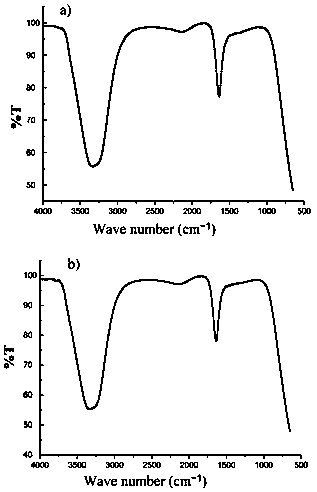Isoptericola and method for using isoptericola for synthesizing nano silver
A technology of termite bacteria and nano silver, which is applied in the field of termite bacteria and its synthesis of nano silver, can solve the problems of inability to meet the actual demand of nano silver, low yield and yield of nano silver, and achieve good industrialization potential and application prospects, efficiency and efficiency. The effect of improved quality and good application prospects
- Summary
- Abstract
- Description
- Claims
- Application Information
AI Technical Summary
Problems solved by technology
Method used
Image
Examples
Embodiment 1
[0060] Example 1 Isolation and identification of bacterial strain SYSUZL-3
[0061] 1. Isolation and screening of strain SYSUZL-3
[0062] The strain SYSUZL-3 was isolated from the Xinjiang halophyte Idiophysis ( Borszczowia aralocaspica Bge.) root, after the surface of the plant is sterilized, weigh 1 g of the sample crushed by a blender, continue to grind it further with a sterile mortar, then add 9 mL of sterile water to the sample, and draw 1 mL of the tissue The suspension was serially diluted to 10 -2 、10 -3 、10 -4 Afterwards, the suspensions of each dilution concentration were taken to coat the separation plate.
[0063] Place the separation plate in an incubator at 30°C for 30-50 days. After the bacterial colony grows, pick and inoculate it on 1 / 2 YIM 38# purification medium, and use the three-section line method to purify; according to the culture characteristics of the strain on 1 / 2 YIM 38# medium, including the color of the colony , size, character, texture,...
Embodiment 2
[0079] Example 2 Optimization of process conditions for synthesizing nano silver by termite fungus strain SYSUZL-3
[0080] 1. Comparison of the efficiency of synthesizing nano-silver between the supernatant of the strain SYSUZL-3 and the bacteria
[0081] Use TSB liquid medium with a pH of 7.5 to cultivate the strain SYSUZL-3 at 28°C and 180 rpm. After culturing for 3 days, centrifuge at 10,000 rpm for 10 min. Take 5ml of the supernatant and bacterial cells and add them to 100ml of silver nitrate solution. , cultivated at 28°C and 180rpm for 24 h, and observed the discoloration of the solution.
[0082] Among them, the formula of TSB liquid medium is: tryptone 15 g, soybean peptone 5 g, NaCl 5 g, supplemented with distilled water to 1 L, pH 7.5, autoclaved at 121 °C for 25 min.
[0083] The experimental results showed that the production efficiency of nano silver synthesized by using the supernatant of strain SYSUZL-3 was higher.
[0084] 2. Effect of the volume ratio of st...
Embodiment 3
[0093] Example 3 Synthesis of silver nanoparticles using termite fungus strain SYSUZL-3
[0094] 1. Synthesis method
[0095] According to the optimization result of embodiment 2, utilize the optimal method of termite bacterial strain SYSUZL-3 synthetic nano-silver as follows:
[0096] (1) Obtain the supernatant of termite strain SYSUZL-3
[0097] After the termite strain SYSUZL-3 was activated twice, it was inoculated in a Erlenmeyer flask filled with 100 mL of TSB liquid culture, and fermented at 28°C and 180 rpm for 24 h. The fermentation broth was centrifuged at 10,000 rpm for 10 min and then filtered to remove bacteria. body, the strain SYSUZL-3 supernatant can be obtained.
[0098] Among them, the TSB liquid medium was: tryptone 15 g, soybean peptone 5 g, NaCl 5 g, supplemented with distilled water to 1 L, pH 7.5, autoclaved at 121 °C for 25 min.
[0099] (2) Synthetic nano silver
[0100] According to the volume ratio of 1:20, the supernatant of the strain SYSUZL-3 ...
PUM
| Property | Measurement | Unit |
|---|---|---|
| particle size | aaaaa | aaaaa |
| diameter | aaaaa | aaaaa |
| diameter | aaaaa | aaaaa |
Abstract
Description
Claims
Application Information
 Login to View More
Login to View More - R&D
- Intellectual Property
- Life Sciences
- Materials
- Tech Scout
- Unparalleled Data Quality
- Higher Quality Content
- 60% Fewer Hallucinations
Browse by: Latest US Patents, China's latest patents, Technical Efficacy Thesaurus, Application Domain, Technology Topic, Popular Technical Reports.
© 2025 PatSnap. All rights reserved.Legal|Privacy policy|Modern Slavery Act Transparency Statement|Sitemap|About US| Contact US: help@patsnap.com



